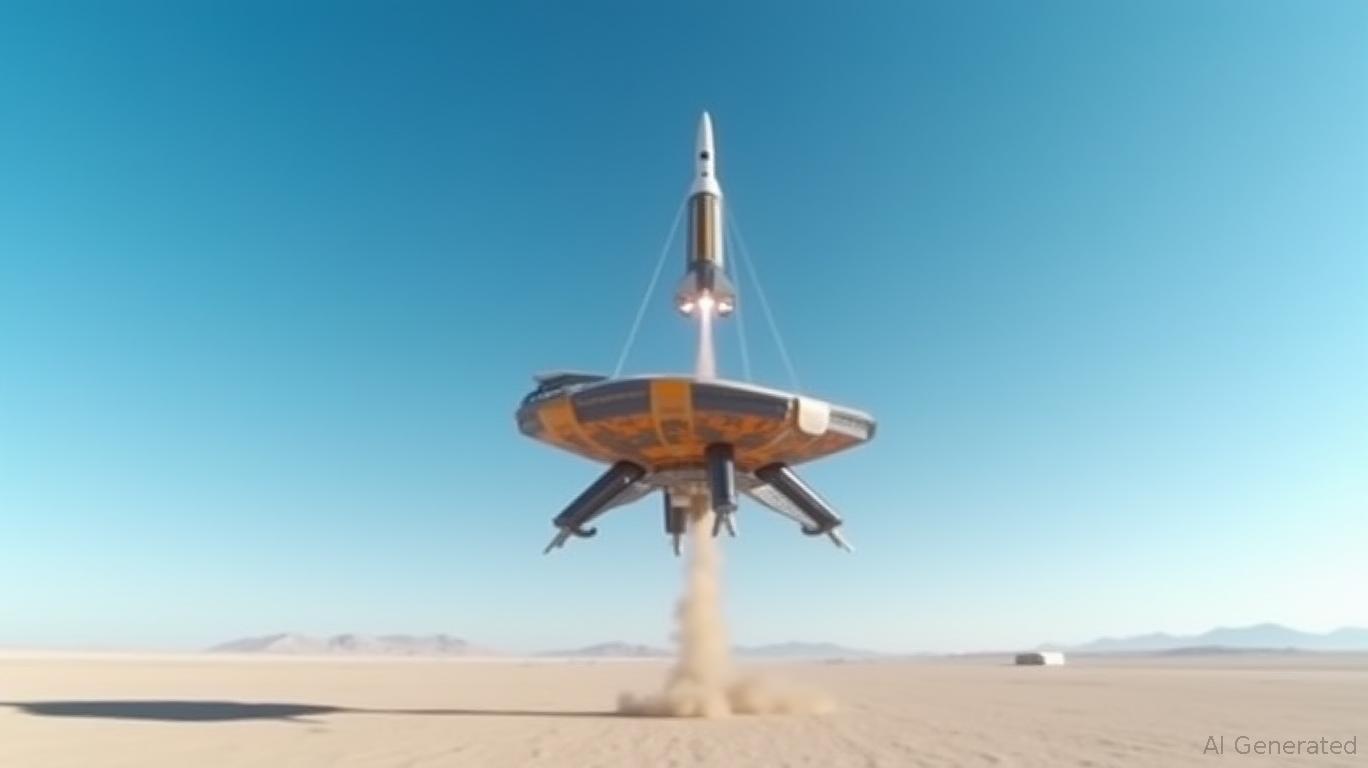SpaceX's Rocket Revolution: How Lower Costs Are Transforming Satellite Infrastructure and Democratizing Space Access
The commercial space industry is undergoing a seismic shift, driven by SpaceX's relentless pursuit of reusable
technology. With milestones like the Falcon 9's 500th mission and Starship's incremental progress toward full reusability, the barriers to space access have crumbled. This transformation is not just technical—it's economic, democratizing opportunities across satellite infrastructure, remote sensing, and data services. Yet, as the sector booms, investors must navigate risks like regulatory hurdles and market saturation.
Falcon 9: The Workhorse of Cost Reduction
SpaceX's Falcon 9 has already rewritten the rules of launch economics. By reusing boosters over 20 times, the company has slashed launch costs to <$3,000/kg to LEO—a fraction of what it cost in the 2000s. This cost efficiency has enabled a staggering 138 launches in 2024 alone, propelling the growth of Low Earth Orbit (LEO) constellations. The Falcon 9's reliability and scalability have made it the go-to rocket for commercial, government, and even crewed missions, setting the stage for SpaceX to dominate the satellite launch market.
Starship: The Next Frontier in Payload Capacity
While Falcon 9 has been the backbone of SpaceX's success, Starship is its moonshot. With a target payload capacity of 200–250 tons to LEO in its Block 3 iteration, Starship aims to revolutionize heavy-lift missions. The first successful booster catch in October 2024, using hydraulic tower arms to recover the Super Heavy booster, marked a critical step toward reusability. Starship's potential to reduce launch costs further—to as low as $100 million per flight—could unlock new applications like lunar cargo missions, satellite mega-constellations, and even space tourism. However, technical hurdles remain, including flap durability and orbital debris mitigation, as seen in the partial failure of Flight Test 9 in 2025.
LEO Constellations: The New Space Economy
The democratization of space access is most evident in the explosion of LEO constellations. With over 11,500 operational satellites by late 2024, the global space economy hit $415 billion in 2024, driven by commercial satellite services. SpaceX's Starlink, now offering broadband at $100/month, has spurred competitors like OneWeb and Project Kuiper. The market for LEO constellations is projected to grow further, with applications expanding beyond broadband to IoT, navigation, and environmental monitoring. However, risks loom: market saturation could drive pricing wars, while regulatory battles over spectrum allocation and orbital debris mitigation remain unresolved.
Remote Sensing and Data Services: The Next Gold Rush
Remote sensing is another sector primed for disruption. High-resolution Earth observation (EO) satellites, like those operated by Planet Labs and ICEYE, are now affordable enough to enable hourly global imaging. Combined with AI-driven analytics, EO data is unlocking value in agriculture, urban planning, and disaster response. The EO market is projected to reach $5.9 billion by 2030, with AI-powered insights accounting for 50% of revenue. Yet, regulatory constraints—such as licensing restrictions on data resolution—limit scalability, while geopolitical barriers (e.g., China's restrictions on foreign operators) could fragment the market.
Risks to the Rocket Revolution
- Market Saturation: With over 18,500 small satellites planned for launch by 2033, competition could outpace demand. Margins in commoditized services like broadband may thin.
- Regulatory Uncertainty: Spectrum allocation disputes, orbital debris policies, and export controls on high-resolution EO systems could stifle growth.
- Technical Hurdles: Starship's ongoing test failures highlight the risks of rapid innovation. A single catastrophic accident could delay progress for years.
- Geopolitical Tensions: China's ambitions in space and its exclusionary policies risk creating fragmented markets, while ASAT (anti-satellite) tests heighten debris risks.
Investment Opportunities and Caution
Investors should focus on three areas:
1. Satellite Manufacturers: Companies like Terran Orbital and Maxar Technologies, which build satellites for mega-constellations, benefit directly from SpaceX's launch cost reductions.
2. Data Analytics Firms: Firms leveraging EO data (e.g., HawkEye 360 for RF mapping or BlackSky for AI-driven insights) are poised for growth.
3. Space Infrastructure: Companies like LeoLabs (Space Situational Awareness) and Arconic (lightweight aerospace materials) address critical supply chain needs.
Avoid overpaying for hype: While Starship's potential is vast, its timeline is uncertain. Investors should demand rigorous due diligence on companies relying on unproven Starship capabilities. Additionally, monitor regulatory developments: the EU's proposed Space Sustainability Rating (SSR) and ITU spectrum policies could reshape the landscape.
Conclusion
SpaceX's advancements have democratized space access, turning LEO into a bustling economic zone. Investors stand to profit from lower launch costs and the data-driven applications they enable—but must remain vigilant about saturation, regulation, and geopolitical risks. The next decade will see space infrastructure investments bifurcate: those that master cost efficiency and regulatory agility will thrive, while others may find themselves orbiting the competition in a crowded field.
As the stars align for commercial space, the question is not whether the revolution will continue—it's whether investors can navigate its turbulence to capture the rewards.

Comments
No comments yet